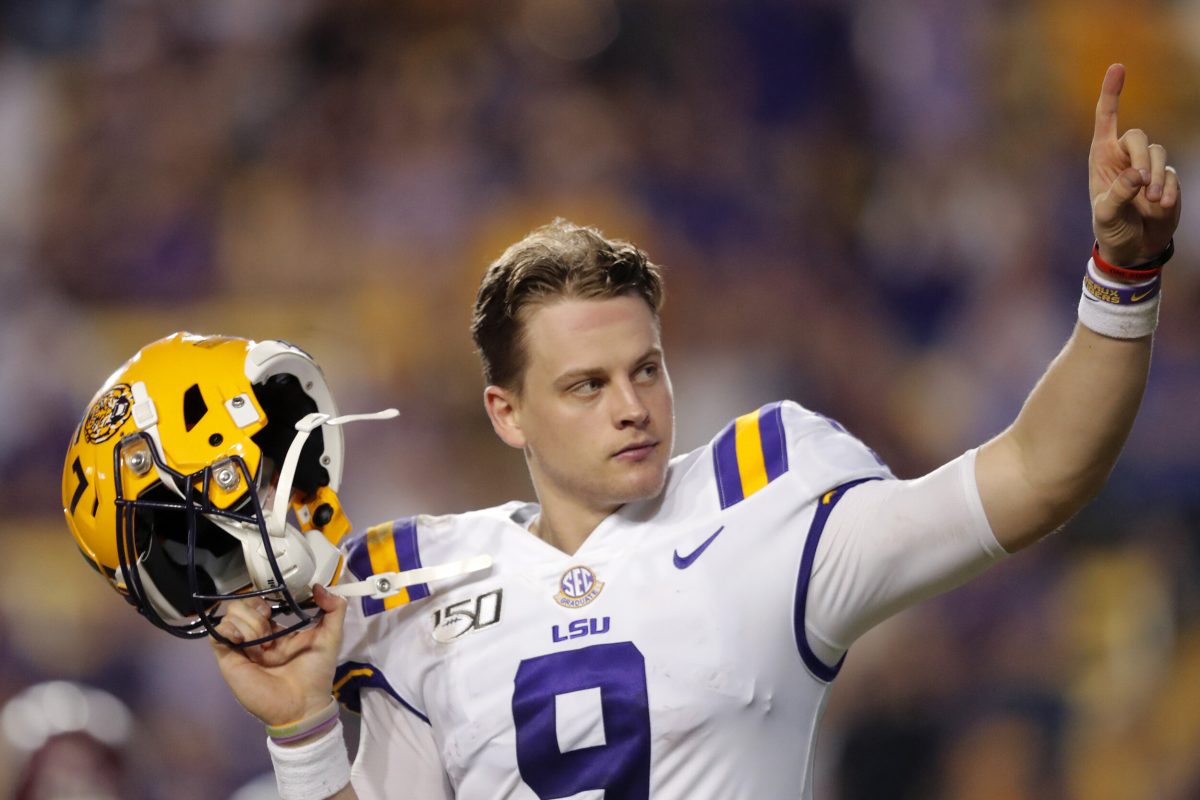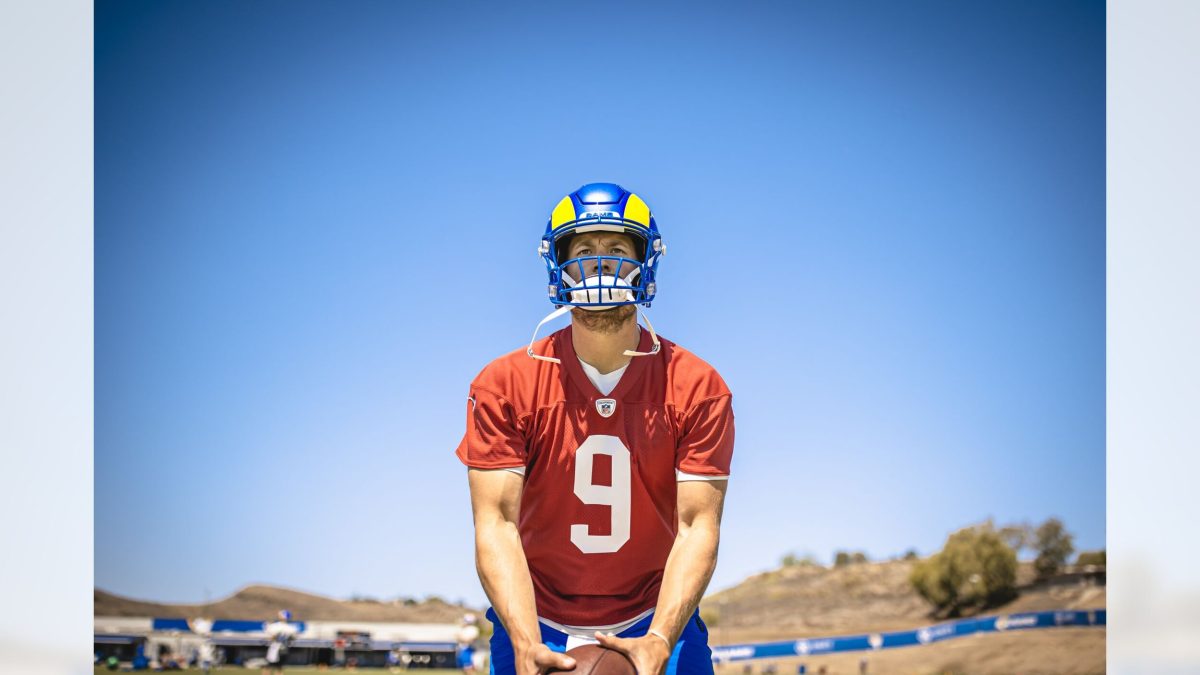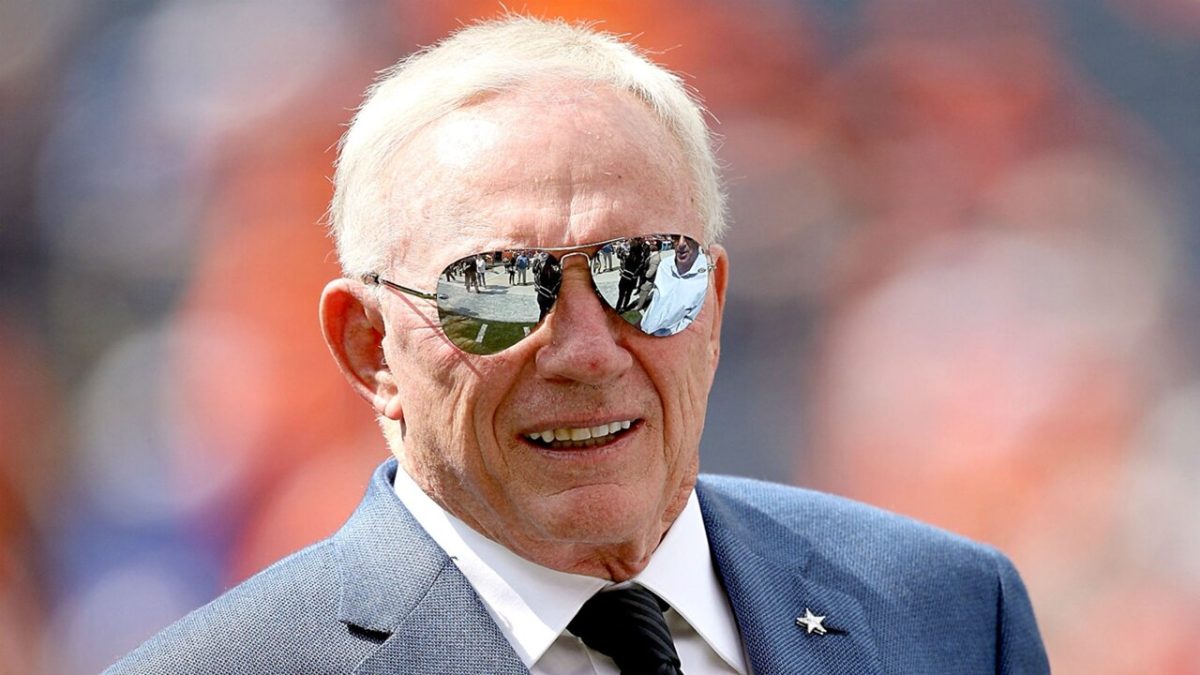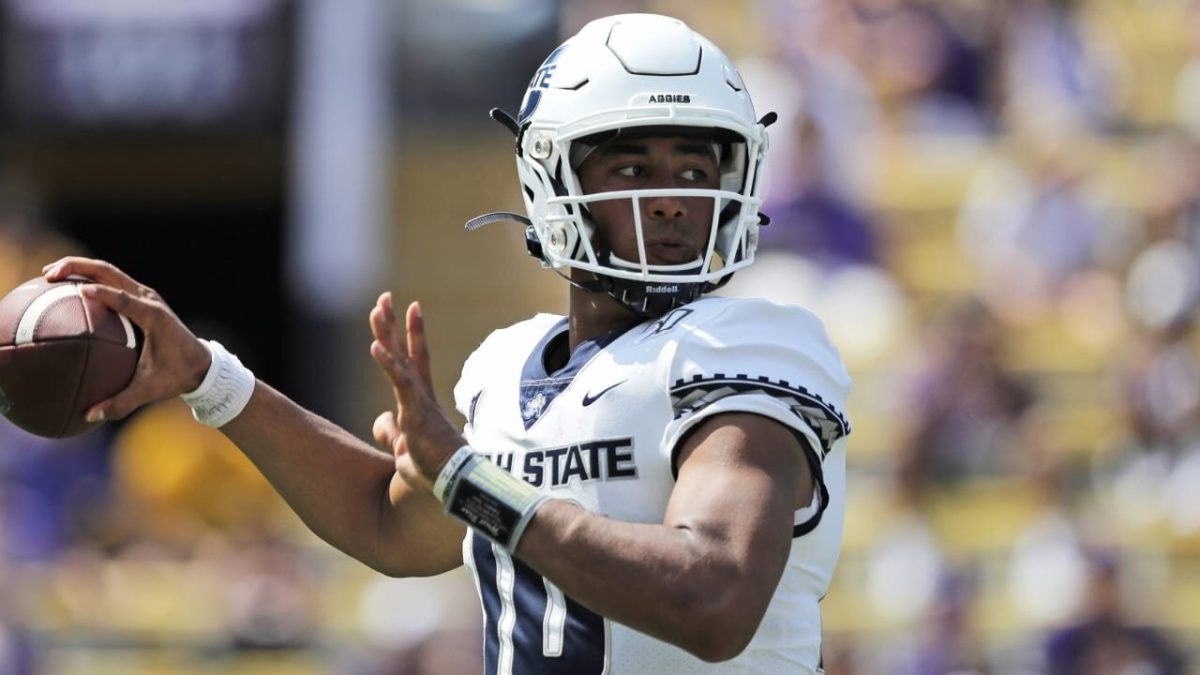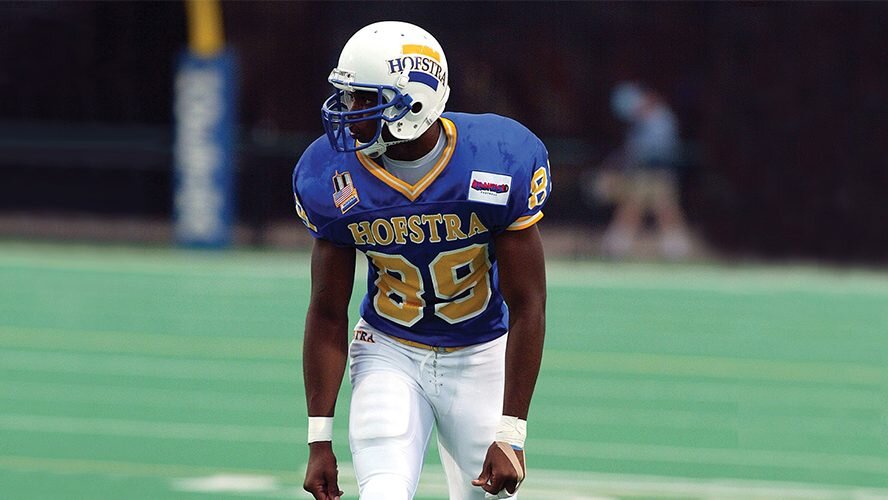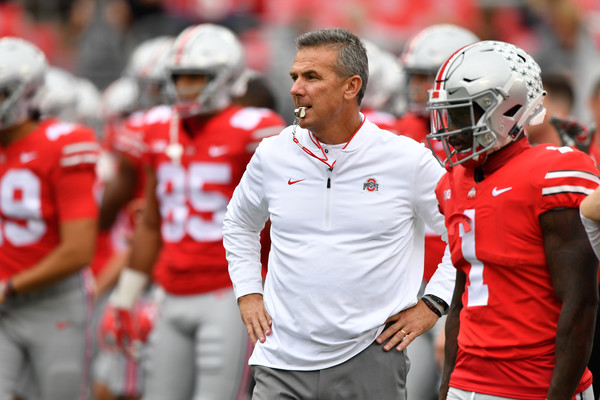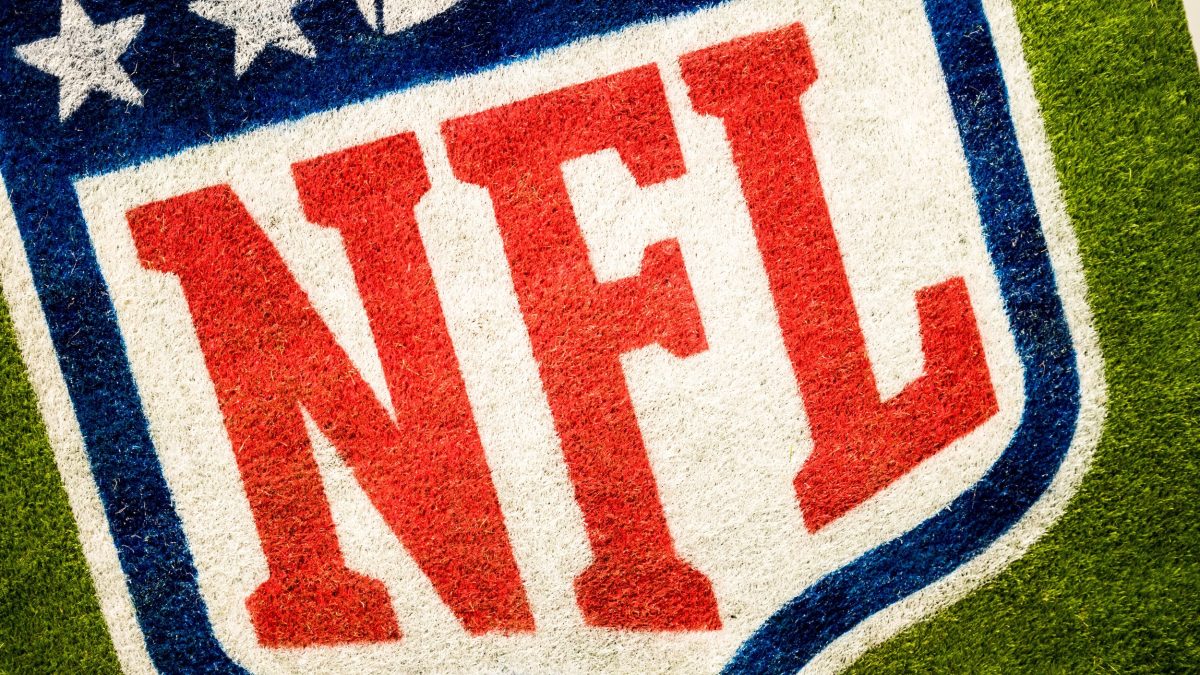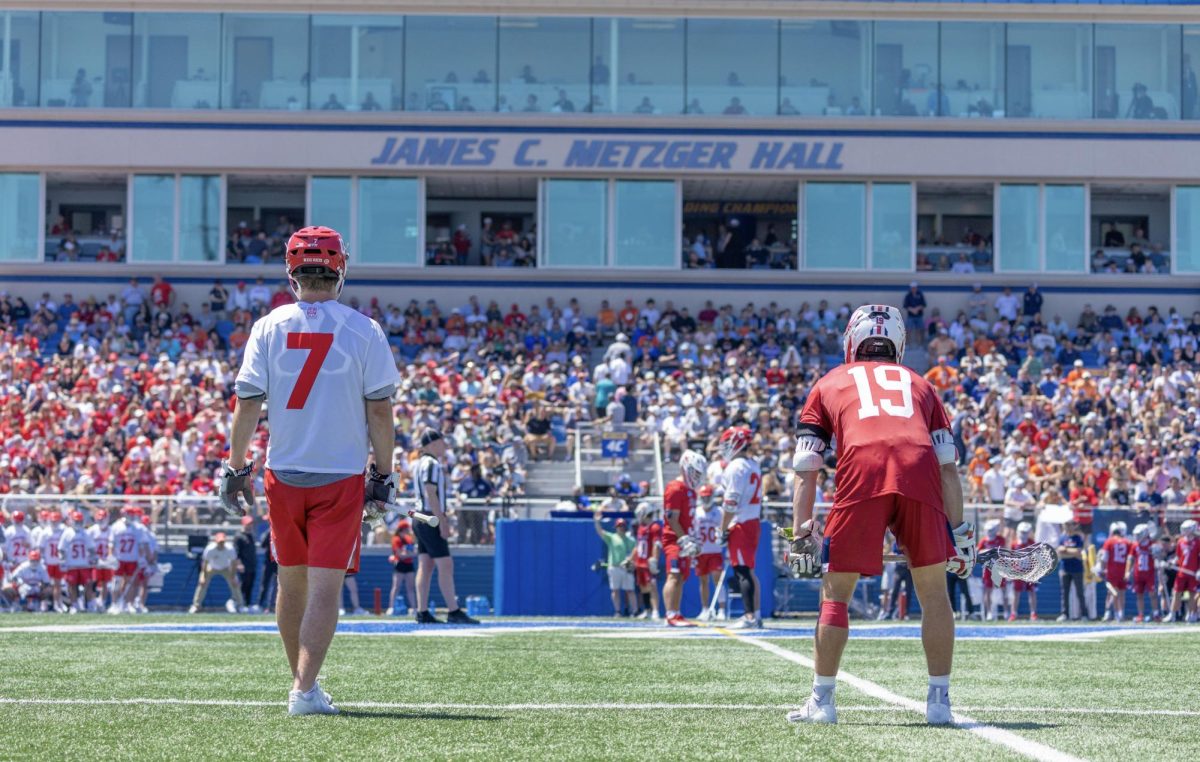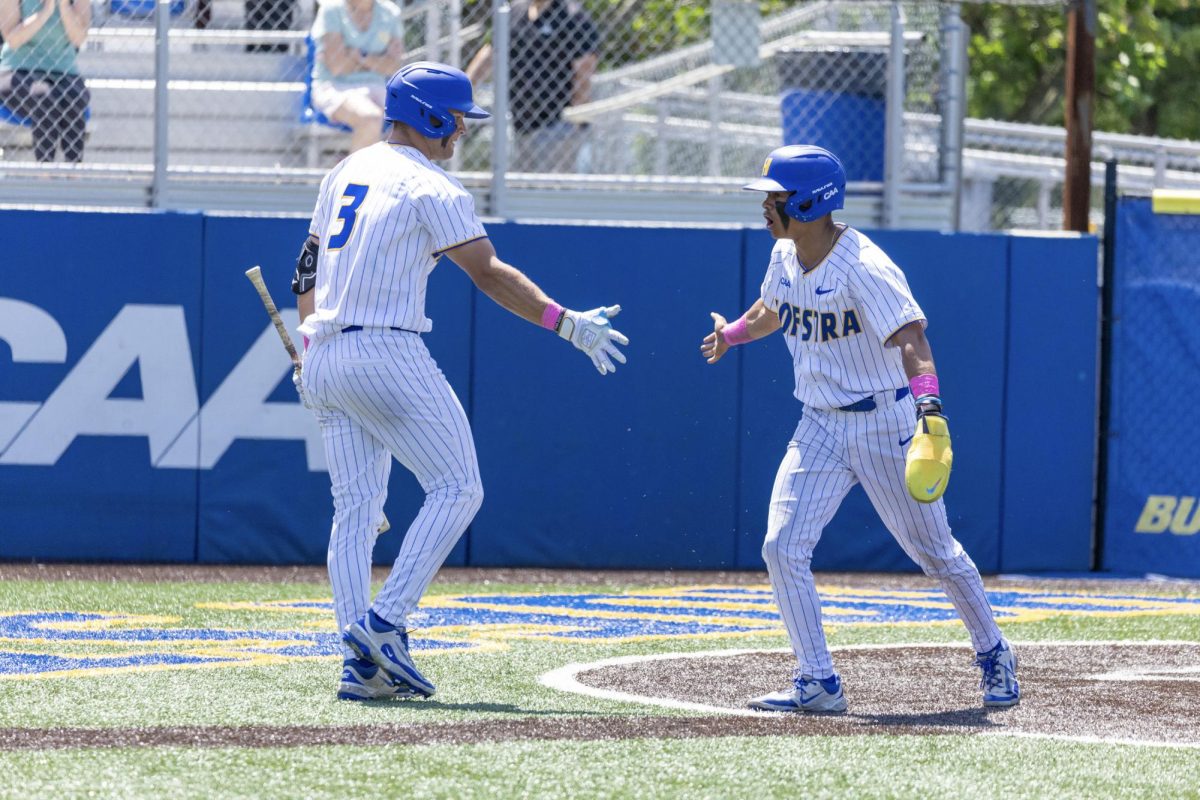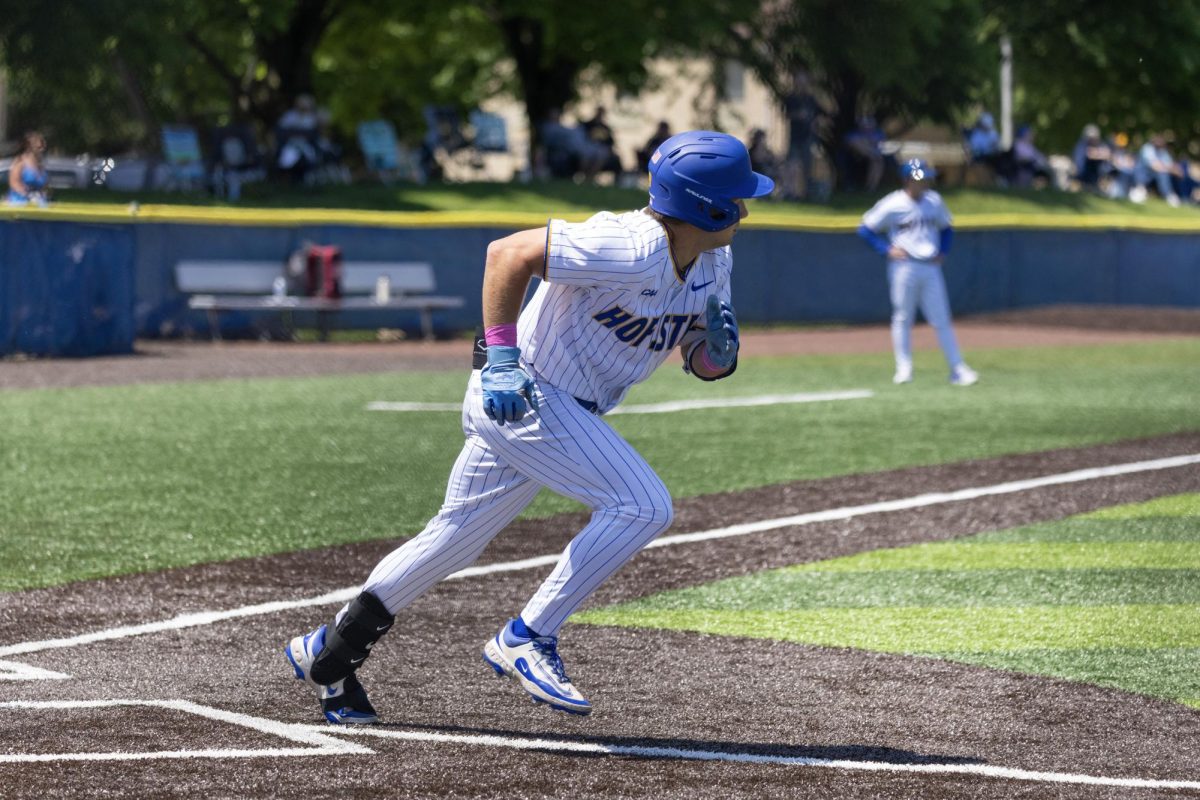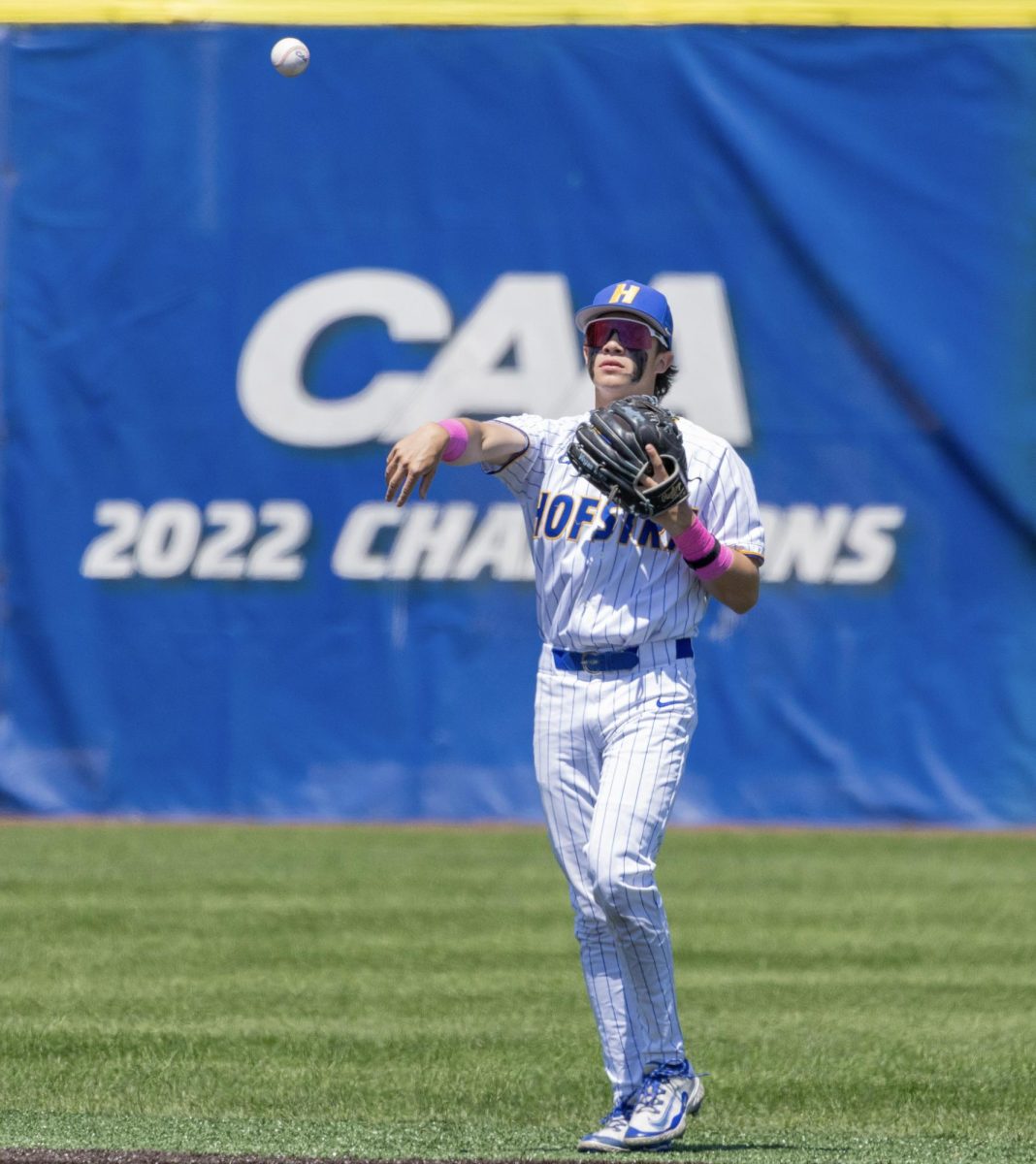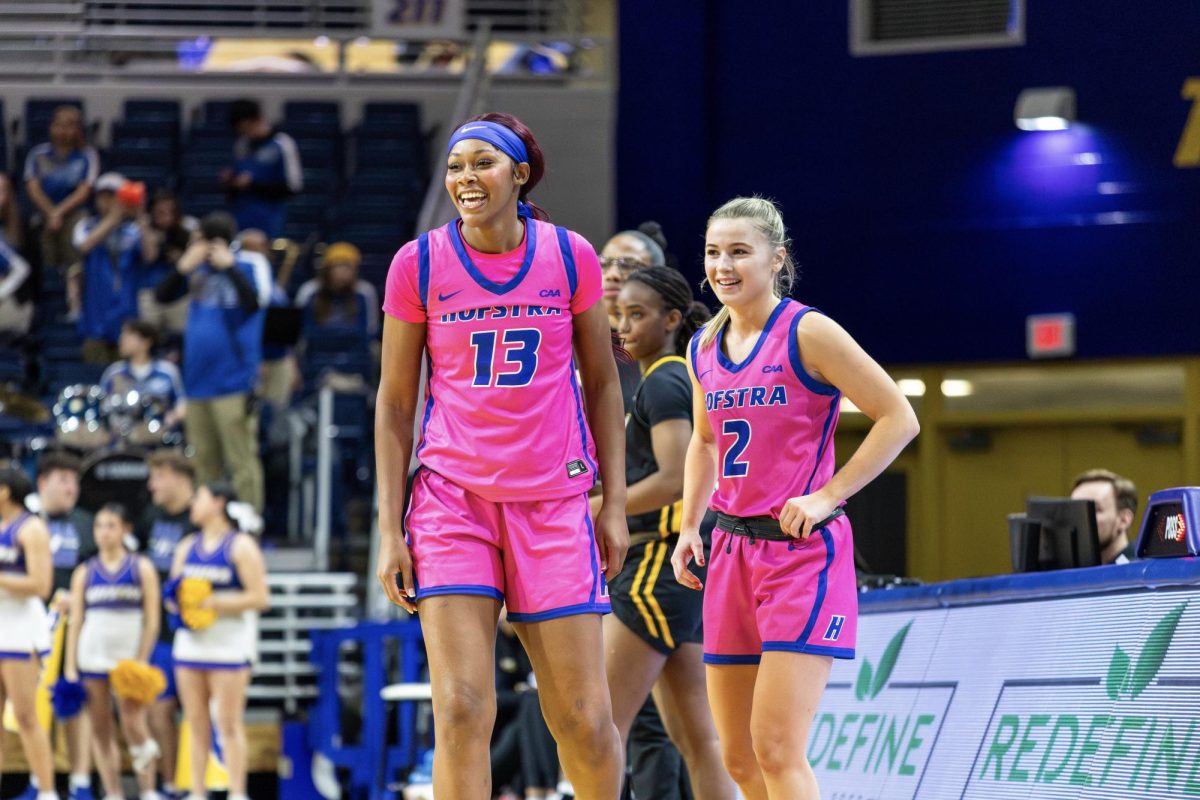The 2020 NFL Draft is tonight. Let’s go over the top-five players from each position.
Quarterback:
1. Joe Burrow, LSU: Burrow is one of the most hyped up quarterback prospects since maybe Andrew Luck in 2012 and for good reason. The 2019 Heisman Trophy winner completed more than three quarters of his passes (76.3 percent) and threw for 5,671 yards and 60 touchdowns. He did have NFL caliber weapons around him like Clyde Edwards-Helaire, Thaddeus Moss, Justin Jefferson and Ja’Marr Chase, but when you look at the film, you see a quarterback who goes through progressions really well and has superb accuracy, especially in tight windows. Scouts say his weakness is arm strength, which I don’t buy into much because he is good at throwing the ball downfield, especially on the run.
2. Tua Tagovailoa, Alabama: Scouts raved about the lefty signal-caller ever since he replaced Jalen Hurts in the National Championship Game in 2018 and led the Crimson Tide to a 26-23 victory past Georgia. His amazing accuracy and touch on throws give him Drew Brees comparisons. He is also good as a runner and at executing RPO plays. The one glaring concern is his durability. He had two ankle surgeries, a broken nose, a concussion and a hip injury that almost ended his career – the same injury that ended Bo Jackson’s career. While him and his agents say he is doing a lot better, there are reports that he had a broken wrist and failed at least one team physical due to injuries.
3. Jordan Love, Utah State: By far the most polarizing quarterback prospect in the draft, Love has made scouts and executives go back and forth. One moment, he makes mistakes that are complete headscratchers. The next, he looks like another Patrick Mahomes. However, even during highlight reel plays where he scrambles and finds someone downfield, there are often times where an easier throw could’ve been made, but Love would not throw to the open receiver. In 2018, he looked promising with 32 touchdown passes in 13 starts, good for eighth in the country. In 2019, he led the FBS with 17 interceptions and only threw 20 touchdowns. This could’ve been because Utah State had a new head coach and nine new offensive starters, including four different offensive linemen. Regardless, the film will create much debate about what Love’s future in the NFL is. Some things that work in his favor are that his receivers weren’t that great and how he got better with decision making as the year went on.
4. Justin Herbert, Oregon: Herbert might have been the best quarterback prospect had he declared for the 2019 NFL Draft. He had a good senior season at Oregon where he threw 32 touchdowns to six interceptions and raised his completion percentage by seven, but don’t let those stats fool you. While Herbert has great athleticism and a big arm, he uses his rocket balls too much. His mechanics are inconsistent, which leads to inaccurate throws. His decision making can also be a problem. His late timing on throws also leads to a lot of incompletions, especially downfield. Herbert might benefit from sitting behind a veteran quarterback and learning behind the scenes. He is also not a vocal leader but rather a lead by example guy, which isn’t a huge issue, but some teams might want the vocal guy instead.
5. Jacob Eason, Washington: Eason had a strong season for the Huskies, completing 64.2 percent of his passes for 3,132 yards, 23 touchdowns and just eight interceptions. He has a cannon of an arm, having a throw measured at 62 mph during the NFL Combine. However, he doesn’t fully know how to use it. Sometimes, throws that require him to lead receivers don’t end up in completions because he throws it hard instead of floating it and leading the receiver. He also needs to work on his timing on throws. He has potential, but he is still a bit too inconsistent.
Running Back:
1. D’Andre Swift, Georgia: Swift had a strong junior season under Kirby Smart at Georgia, rushing for 1,218 yards on 196 attempts (6.2 Y/A). He had a 4.48 40-yard dash time. He possesses good speed and cut ability. He needs to work on his ball security. Other than that, scouts believe he is a better prospect than Josh Jacobs and faster than Nick Chubb. He has also received some comparisons to Alvin Kamara.
2. Jonathan Taylor, Wisconsin: Taylor rushed for over 2,000 yards and 21 touchdowns while averaging a solid 6.3 yards per carry. He also improved in the receiving game last year as well. Taylor also excels in getting extra yards when he uses a powerful stiff-arm. He ran a 4.39 in the 40 at the combine. He is likely a day two pick though, as his 17 career fumbles has concerned scouts.
3. J.K. Dobbins, Ohio State: Dobbins averaged almost seven yards per carry in 2019. He doesn’t have the same speed as others, measuring a 40-time in the 4.5s. However, he has an explosive first step and is a good downhill runner.
4. Cam Akers, Florida State: Akers had the lowest Y/A of any of the running backs on this list, but that can be due to playing behind a subpar offensive line. He possesses a 40-time below four and a half seconds. He is able to shed tackles and fight for yards. However, his ball security is a little concerning.
5. Clyde Edwards-Helaire, LSU: Although LSU had great receivers and threw the ball a lot, Edwards-Helaire’s success in the backfield can’t be overlooked. He’s good at shedding tackles and securing the ball. He can cut and spin to make great runs and move the chains. He is only 5’7” though, so his catching abilities may be limited. He also has a 40-time in the 4.6s, making big runs more difficult.
Wide Receiver:
1. Jerry Jeudy, Alabama: In a draft class rich in wide receiver talent, Jeudy takes the cake as the best. Jeudy runs a 4.45 40-yard time. His route-running is precise. He excels at yards after the catch and getting past double coverages. He could be the next line of great Alabama receivers, following in the steps of Julio Jones, Amari Cooper and Calvin Ridley. Sometimes, he loses concentration and focus on his running after the catch which leads to some easy drops.
2. CeeDee Lamb, Oklahoma: Lamb is an unbelievable deep threat who averaged 21.4 yards per catch in 2019. He uses his 6’2” height and 32 ¼ inch arms to excel with 50/50 balls. He does not have burning speed and has performed well usually against weaker corners. He needs to get better when facing press coverage against more talented corners.
3. Henry Ruggs III, Alabama: Ruggs ran a 4.27 40-time and has drawn Tyreek Hill comparisons as a result. He provides more value than just receiver, as he was a kick returner and gunner on special teams.
4. Justin Jefferson, LSU: Jefferson has risen on draft boards after a solid combine. He is slippery in space and has a nice repertoire to beat receivers one-on-one. He has one of the highest ceilings out of all receivers in the draft.
5. Tee Higgins, Clemson: Higgins could join Sammy Watkins and DeAnd
re Hopkins as some of the great receivers to come out of Clemson. He has good instincts. His 6’4” height and over 34-inch arms give him length, making him a reliable weapon in the red-zone.
Tight End:
1. Cole Kmet, Notre Dame: This tight end class is weaker compared to other ones, especially last year’s which included Iowa first-round picks T.J. Hockenson and Noah Fant. However, Kmet is a phenomenal athlete, playing football and baseball for the Fighting Irish. He has good size at 6’6” and 262 pounds along with 33” arms. He had 43 catches for 515 yards and six touchdowns. He also does well with yards after the catch. He needs to improve his blocking abilities and his ability with contested catches.
2. Adam Trautman, Dayton: Trautman had a line of 70/916/14. He also had a great week at the Senior Bowl but ran slower than expected at the combine. He’s going from a non-power five conference to the NFL, so he needs to make that big jump. He also needs to work on his blocking abilities.
3. Thaddeus Moss, LSU: The son of Hall of Fame wide receiver Randy Moss, Thaddeus hauled in 47 receptions for 570 yards and four scores with two of those catches coming against Clemson in the national title game. He is also a good run blocker. However, his athleticism is seen as just average. Moss has a chance to have a successful NFL career, but going back to college for one more year might’ve helped him in the long run.
4. Albert Okwuegbunam, Missouri: Okwuegbunam is 6’5,” 258 pounds and runs a 4.49 40-yard time. He only had 26 catches for 306 yards and six touchdowns, but Missouri went from Drew Lock to Kelly Bryant at quarterback. He has a lot of upside, but his blocking isn’t there and his maturity might not be there either. Some teams have questioned his toughness and have him falling on draft boards.
5. Colby Parkinson, Stanford: Parkinson was able to have a great year with 48 catches, 589 yards and a touchdown, despite playing with backup quarterbacks all year. He provides a size mismatch at 6’7” and 252 pounds and is a potential red-zone threat, but ran slower than expected at the combine, clocking in at the 4.8s. He also needs to better against safeties and at run-blocking.
Offensive Tackle:
1. Jedrick Wills Jr., Alabama: Wills is the best offensive lineman of the big four in this draft that includes him, Tristin Wirfs, Mekhi Becton and Andrew Thomas. His technique makes him the most polished lineman in the class and the readiest to start Day 1. He played right tackle for the Crimson Tide but was the blindside blocker for the lefty Tua.
2. Tristan Wirfs, Iowa: Wirfs had arguably the best combine of any lineman in this draft. He ran a 4.85 for the 40-yard run at 320 pounds. Him and Becton have the highest ceilings in the draft, but Wirfs needs to improve his technique and blocking certain moves from edge rushers.
3. Mekhi Becton, Louisville: This guy is a freak. He weighs over 360 pounds and ran a 5.1 40-yard at the combine. He absolutely trucks defensive lineman with his size. He seems to rely on this, though, instead of technique. Not to say that his technique is bad, but he might have to rely more on the proper technique when dealing with bigger and better athletes in the NFL. His hand placement is also spotty, which can lead to some problems with bull rushes.
4. Andrew Thomas, Georgia: Thomas was a good left tackle at Georgia, and protected Jake Fromm’s blindside very well. He is seen as a better run blocker than pass protector at this time. While he did well in some matchups, like against the Florida Gators defensive line, he struggled against LSU defensive end K’Lavon Chaisson.
5. Austin Jackson, USC: There is a drop off from the top four to Jackson. However, Jackson still has lower first round grades from different teams. He is a good athlete and has a high ceiling, but he needs to improve his technique and footwork.
Offensive Guard:
1. Solomon Kindley, Georgia: This is not a strong guard class, as it may take until day three to see one taken off the board. Kindley has great size at 337 pounds and average arms at 32 and a quarter inches. Scouts have a problem with his weight due to the fact that he could struggle against speed rushers. If he drops a few pounds though, he could be a mid-round steal.
2. Robert Hunt, Louisiana-Lafayette: Hunt has a nice skill set but is not the best at bending. He is better as a pass protector. If he improves his strength, he could be a great interior offensive lineman for the team who drafts him.
3. Shane Lemieux, Oregon: Lemieux has good size and could be good in the NFL. He is scrappy in pass blocking and uses upper-body strength to his advantage. However, his base is sometimes too wide in pass protection, and his arms aren’t ideal.
4. Logan Stenberg, Kentucky: Stenberg is a great run-blocker but not as good at pass blocking. He dominated at one-on-ones at the Senior Bowl. A serious concern though is his discipline. He has to limit penalties and other mental mistakes.
5. Netane Muti, Fresno State: Muti is powerful, especially with his upper body, but his injury history is probably the worst out of anyone in this draft, even Tua. He played just 19 games over four years. He missed nine games in 2019 with a Lisfranc foot injury and 12 out of 14 games in 2018 due to a torn Achilles. He was effective when on the field though, allowing only three pressures on 193 pass attempts, according to Pro Football Focus. He can be a mid-round steal if he stays healthy, but that’s a big if.
Center:
1. Cesar Ruiz, Michigan: Ruiz is someone who is quick from snap to step and blocking, whether it’s a pass or run play. His hand placement is solid to prevent inside pressure.
2. Tyler Biadasz, Wisconsin: Biadasz was good with one-on-ones. He was an important contributor in the passing game and was also solid in run-blocking. He could be a starter quickly in the NFL. He needs to work on his base a little to be better.
3. Lloyd Cushenberry III, LSU: Cushenberry III was vital in blocking for Edwards-Helaire and Burrow in 2019. He has long arms at over 34 inches. He struggled at the Senior Bowl with one-on-ones and needs to improve his run blocking.
4. Matt Hennessy, Temple: Hennessy is athletic, but lacks power. He missed time with a concussion in 2019, but still came out for the draft. Teams say he is a smart player, which has helped his stock.
5. Nick Harris, Washington: Harris possesses a wide and strong base and good body control. His hand movement is a tool that helps him in pass and run blocking, but he does not have the physical traits most teams look for.
EDGE:
1. Chase Young, Ohio State: Young managed to produce 16.5 sacks and 21.0 tackles for loss in 2019 in 12 games. He missed two due to a suspension from NCAA violations. He has been labeled better than the Bosa brothers were when they left Ohio State. He can spin, twist and win on a bull rush. He’s viewed as the best player in the draft and the safest pick out of all positions.
2. K’Lavon Chaisson, LSU: Chaisson may have the biggest upside in the draft. We know what we’re getting in Young, but Chaisson has a really high ceiling. He produced 6.5 sacks, a forced fumble, two passes broken up and 60 tackles last year, despite playing with an ankle injury. He missed the majority of 2018 with a torn ACL. Despite the injury history, he’s really quick and twitchy and changes directions well. He follows the ball during the pass and the run very well and can handle players bigger than him. Some things he could use improvement on is his hand usage and his reaction to different blocking moves.
3. A.J. Epenesa, Iowa: Epenesa is a versatile end. He can play in a 3-4 or a 4-3. He has a good variety in his rushing abilities and also excels against the run. He is more of a power rusher, but he is still able to produce sacks, pressures and QB hits. He sometimes is too slow in responding to blocking moves. He also had a mediocre combine which may have hurt his draft stock a bit.
4. Zack Baun, Wisconsin: After only 2.5 sacks in 20 games, Baun dramatically improved in his senior season. He projects to be an outside linebacker in a 3-4. In 14 games and more playing time, he recorded 12.5 sacks. He’s an explosive athlete and possesses great speed and athleticism, but his size is a bit concerning. He also needs to work on technique instead of winning battles with his athleticism.
5. Julian Okwara, Notre Dame: Okwara was a versatile player at Notre Dame who could succeed in pass coverages and rush the quarterback. He has great length and a great frame. He does lack counter-rushes and needs to work at his run defense.
Defensive Tackle:
1. Derrick Brown, Auburn: Brown has gotten comparisons to Fletcher Cox. In 2019, he earned first-team AP All-American and first-team All-SEC honors. He is seen as the best defensive player in the draft outside of Young. Brown is not just seen as a run stuffer but rather a three-down lineman that can also impact the pass.
2. Javon Kinlaw, South Carolina: The first-team All-SEC defensive tackle last year was solid against the run and was able to get to the quarterback, recording six sacks. He could play 3-4 end but lined up on the interior in college. His bull-rush is extremely powerful, creating havoc in the inside. He possesses an explosive first step and mean hands. Brown is the safer pick, but Kinlaw is the player with the higher upside. He could be similar to DeForest Buckner.
3. Justin Madubuike, Texas A&M: Madubuike is undersized as a tackle and might end up being a 3-4 end. However, he has great leverage and twitchy feet, which helped him be a solid player for the Aggies.
4. Ross Blacklock, TCU: Blacklock is good at finding a crevice in double-teams and has good instincts. However, he is sometimes unable to get off of blocks. He is great at getting pressure but has trouble finishing and getting sacks. He is kind of like Leonard Williams in that regard.
5. Marlon Davidson, Auburn: The other defensive tackle from Auburn was also named first-team All-SEC defensive tackle. Davidson had more sacks, 7.5, and tied Brown with 12.5 tackles for loss. He can play in different schemes and could be a 4-3 end in the long run. He possesses good hand usage, spin counter moves and inside quickness. He also is valuable on special teams, blocking three kicks last year. He needs to improve on run defense and footwork.
Linebacker:
1. Isaiah Simmons, Clemson: Simmons played at least 100 snaps at outside linebacker, inside linebacker, slot corner, free safety and strong safety. Most of his snaps came at middle linebacker (299), according to Pro Football Focus. He also rushed the quarterback 71 times and recorded seven sacks. He is viewed as the next great hybrid defender in the NFL. He is a must-have for defensive game planners.
2. Patrick Queen, LSU: LSU has a track-record for producing great NFL linebackers, like Devin White, Deion Jones and Kwon Alexander. Queen was a solid linebacker for the Tigers and played especially well against Georgia, Oklahoma and Clemson to end the year. He is also good at tracking the ball. He started one year and is only 20 years-old, so he may still grow physically and become a better student of the game.
3. Kenneth Murray, Oklahoma: Despite playing in the Big XII, Murray was a good playmaker for the Sooners. He moves like a safety and has great range. He also produced an average of almost 15 tackles for loss over the last two years. He needs to work on his instincts, however. He could be either a late day one or an early day two pick.
4. Jordyn Brooks, Texas Tech: Brooks is six feet tall, 240 lbs. and runs a 4.54 40-yard time. He has good instincts and twitch. He’s likely a day two pick, but he might become one of the best linebackers of this class based on pure potential.
5. Malik Harrison, Ohio State: Harrison has a big frame and has experiences at many different linebacker spots. He also can change direction very well. However, sometimes, his angles to the ball aren’t the best. He also needs to learn to stop biting on play-action.
Cornerback:
1. Jeff Okudah, Ohio State: Okudah is unquestionably the best cornerback in the class and will be drafted early. He has good physical attributes and wins a lot of 50/50 balls. He had zero pass interference and holding penalties last year. He plays better in man but can play zone as well.
2. C.J. Henderson, Florida: Henderson plays the ball very well and follows it in the air and defends it rather than committing penalties. He is able to cover deep threats well. He has makeup speed and the ability to cover routes.
3. Noah Igbinoghene, Auburn: The third player in the defensive rankings to come from Auburn, Igbinoghene is a strong and physical player who’s good at pressing wide receivers. He is also acknowledged as a hard worker who practices a lot. He offers value as a gunner on special teams and also recorded two career kick return touchdowns. He is still a bit raw and needs to improve footwork.
4. Kristian Fulton, LSU: Fulton had some bad games against ranked teams, such as Texas and Clemson. He can keep up with receivers and does a good job preventing separation, but he needs to become more disciplined and better with 50/50 balls.
5. Trevon Diggs, Alabama: Diggs is a raw corner who needs to develop a little bit in the NFL. This most likely stems from injury history. He p
ossesses above-average instincts. However, he is late when tracking the ball and not the best against double moves. He is possibly a late first rounder but may fall to the second.
Safety:
1. Xavier McKinney, Alabama: McKinney was a third-team AP All-American and first-team All-SEC. He finished with 95 tackles (5.5 for loss and three sacks) and four forced fumbles. He has versatility and is known for his high football IQ. He projects as a matchup safety, as he excelled playing slot, free safety and in the box.
2. Grant Delpit, LSU: Before the season started, Delpit was viewed as a potential top-15 pick and even top-10. A rough 2019 season now might have him drop out of the first round. Delpit’s glaring problem was missing tackles last year, but he did battle a high ankle sprain for the majority of it. If scouts watch his 2018 tape, they will think of him more highly. He should project to become a strong safety.
3. Antoine Winfield, Minnesota: Minnesota was ranked as high as seven last year after a couple of years of .500 football. Winfield’s play was a big reason why. He has good instincts and a great frame and size for the NFL. Winfield has no problem tracking the ball. He might fall due to his injury history, as he missed a lot of time in 2017 and 2018. He also needs to improve his tackling. However, if he’s healthy for a long period of time, this might work itself out.
4. Jeremy Chinn, Southern Illinois: Chinn is likely to go in the second round. He has good ability to play man coverage and tackle. He has good athleticism and a solid frame. His instincts and IQ need to improve, but a good coach who teaches him well could get a valuable player on day two.
5. Ashtyn Davis, California: Scouts say as a person and athlete, Davis is one of the best. He can line up in different spots and possesses great speed. He has decent recognition skills but has to improve on instincts.
Kicker:
1. Rodrigo Blankenship, Georgia: Blankenship made 92.7 percent of his kicks under 40 yards and was 6-9 on 50+ yard attempts.
2. Dominik Eberle, Utah State: Eberle went 43-52 in his last two seasons (82.7 percent). He was a perfect 167-167 on extra points in his career.
3. Jet Toner, Stanford: Toner was 14-15 in 2018 but 12-16 in 2019. He made a long of 51 yards, but he needs to hit long field goals more often.
4. Jace Christmann, Mississippi State: Christmann had only 10 attempts last year but went 8-10 with 51 yards being his longest converted kick.
5. Tyler Bass, Georgia Southern: Bass had a down year in 2019, going 20-28 (71.4 percent), compared to 2018, when he went 19-21, including a long of 50 yards. He kicked well at the Senior Bowl.
Punter:
1. Braden Mann, Texas A&M: Mann averaged 51 yards per punt in 2018 and 47.1 yards per punt last year, which included a long of 68. He should be the first punter off the board.
2. Joseph Charlton, South Carolina: Charlton went from 44.8 yards per punt in 2018 to 47.7 in 2019. His longest punt was 73 yards in 2018 and 66 yards in 2019.
3. Tommy Townsend, Florida: Townsend averaged 45.4 and 44 yards per punt in 2018 and 2019 respectively. His long in both of those years was 71.
4. Derek Adams, Kent State: Adams’ longest punt was 77 yards two years ago and 76 yards last year. He went from 40.2 yards per punt in 2018 to 43.1 in 2019.
5. Blake Gillikin, Penn State: Gillikin averaged 42.2 yards per punt last year. His longest was 72. It’s a little down from 2018 where he averaged 44 yards per punt and had a long of 74.
Thank you for reading! Enjoy the Draft tonight!
Photo courtesy of Gerald Herbert/AP

